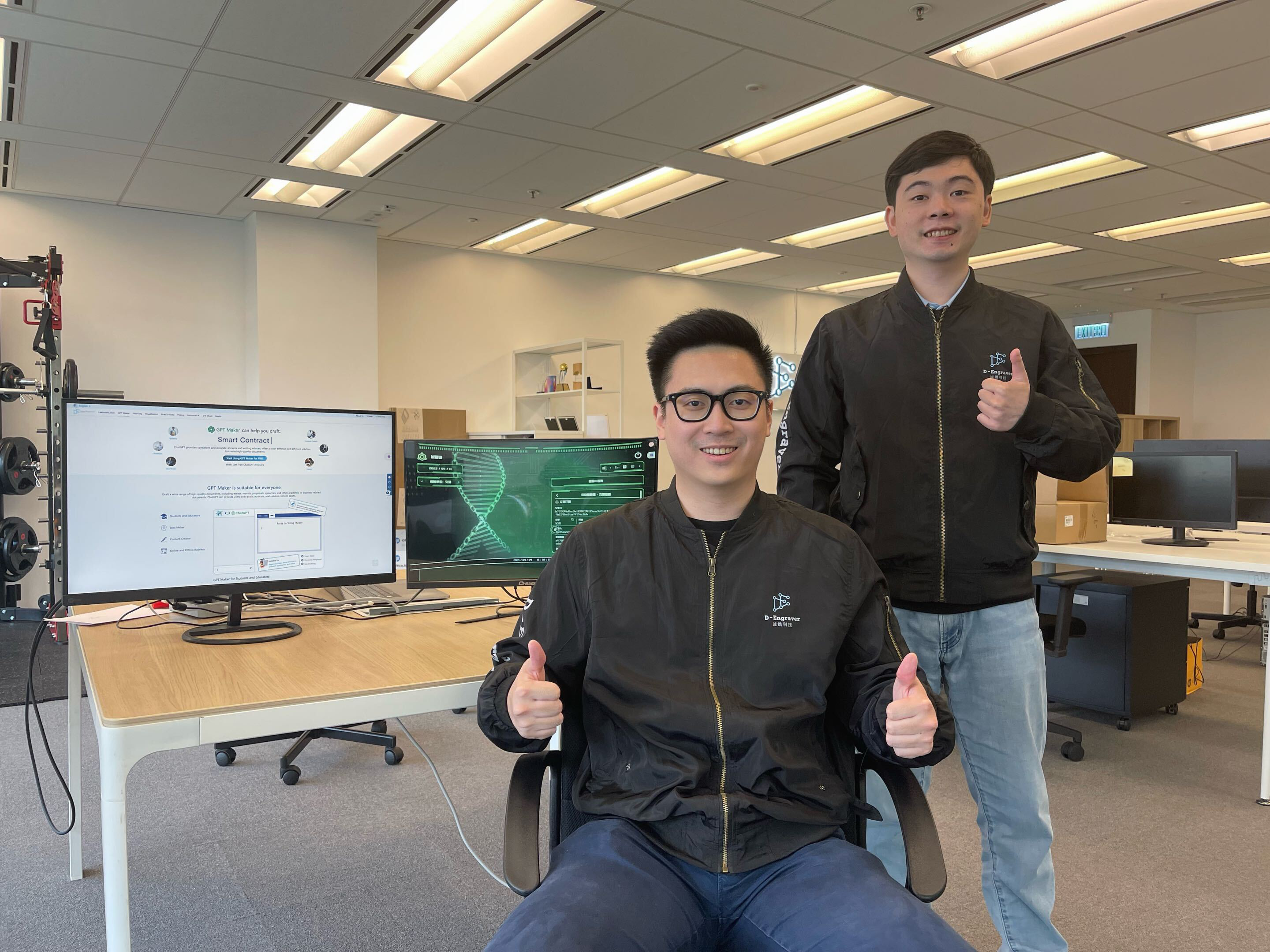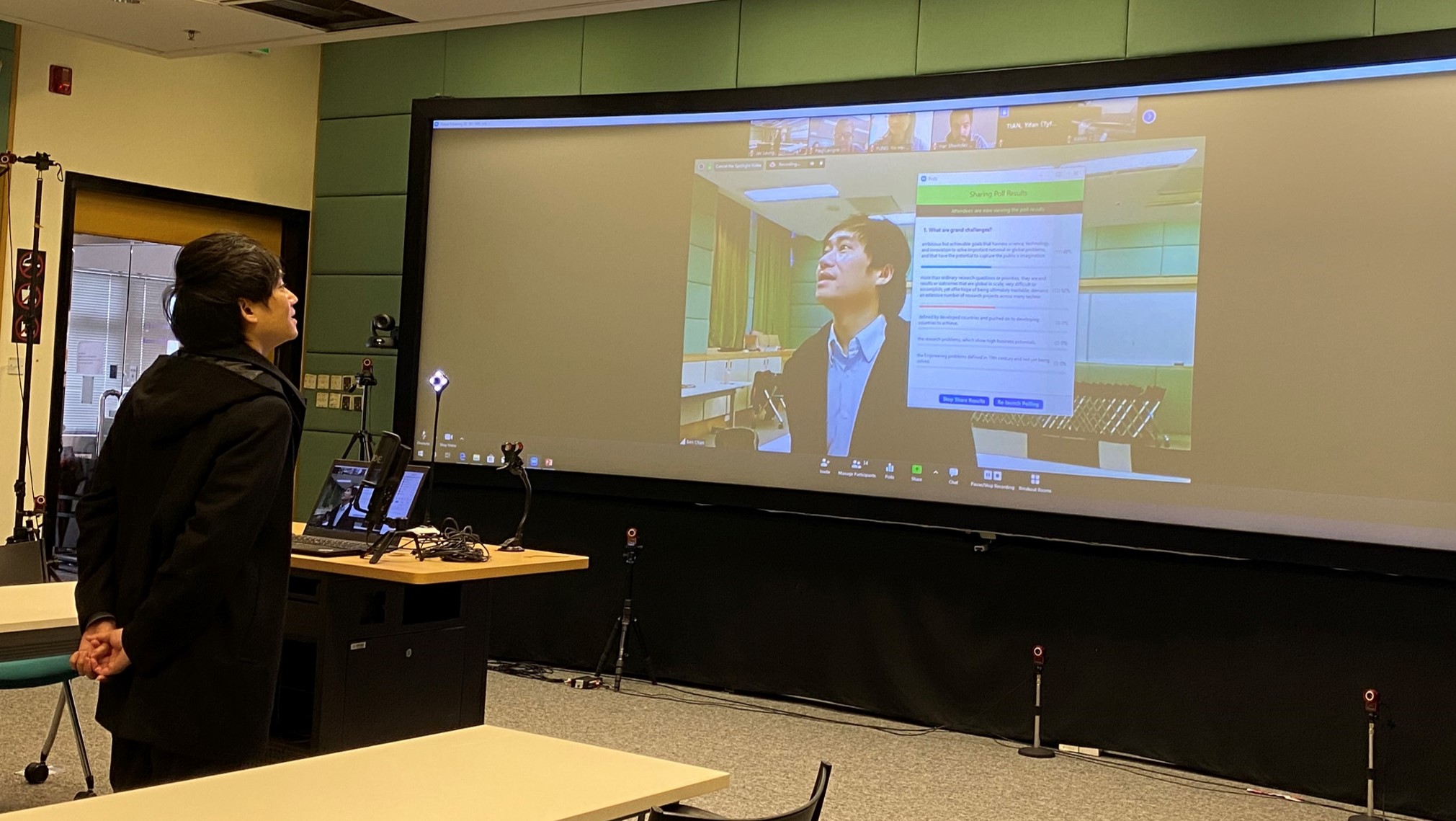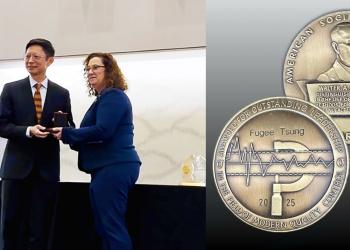Generative AI for Generation AI
Overview
Generative AI refers to a subset of artificial intelligence that can create entirely new and original content such as text, images, audio, video and code. Unlike traditional AI models that are trained to analyze and make predictions based on existing data, generative AI leverages advanced machine learning techniques like deep learning and neural networks to generate brand new outputs that have never existed before. This is achieved by the AI model learning the patterns, structures and context within the training data to then produce novel content from scratch. Some well-known examples of generative AI include text-generation models like GPT-3, image creation tools like DALL-E 2, and audio synthesis programs. As a global AI hub, Hong Kong is at the forefront of harnessing generative AI's transformative power.
What are the core technologies and methodologies of Generative AI?
Generative Adversarial Networks (GANs): GANs consist of two neural networks - a generator and a discriminator - pitted against each other. The generator creates synthetic data like images or text, while the discriminator evaluates if each output is real or fake from the training data. Through this adversarial process, the generator learns to produce outputs indistinguishable from real data as the discriminator gets better at detecting fakes. GANs can capture complex data distributions remarkably well, enabling photorealistic image generation, text synthesis, voice conversion and more.
>Variational Autoencoders (VAEs): VAEs have an encoder that compresses data into a latent space representation and a decoder to reconstruct it. By sampling from the learned latent distribution, the decoder generates new data points plausibly drawn from the original dataset. VAEs are good at generating diverse outputs while maintaining fidelity to the training data. They have applications in tasks like image inpainting, denoising, data augmentation and anomaly detection across different data modalities.
Transformers and Large Language Models: These models like GPT-3, BERT and LaMDA are trained on massive text corpora to learn linguistic patterns and context. At inference, their multi-headed attention allows capturing long-range dependencies to generate highly coherent text continuations mimicking human writing styles. Large language models have revolutionized applications like conversational AI, content creation, code generation, question-answering and text summarization by leveraging their remarkable generative capabilities.
Diffusion Models: Diffusion models learn to reverse the process of gradually adding noise to training data, allowing generation of new samples from pure noise. Conditioned on text prompts, models like DALL-E 2 and Stable Diffusion can create stunningly photorealistic images depicting complex scenes and concepts. Diffusion models excel at high-fidelity image synthesis while allowing control over generated content. They are also being explored for tasks like 3D shape generation, audio synthesis and video generation.
What are the significant accomplishments of Hong Kong University of Science and Technology (HKUST) in the field of generative AI?
Hong Kong has established the Hong Kong Generative AI Research & Development Center (HKGAI), a collaboration between top universities and international partners, to spearhead R&D efforts in multilingual foundation models, generative AI applications, and exploring ethics/governance issues. HKGAI showcased cutting-edge generative AI projects like AI consultation chatbots, deepfake detection, and text-to-video conversion at the InnoEx 2024 exhibition.
- HKUST was the first university in Hong Kong to promote the use of ChatGPT in teaching and allocated HK$10 million to establish the Education and Generative AI (EDGE-AI) Fund to encourage applying AI in teaching.
- HKUST introduced Asia's first "AI Lecturers" in class to promote teaching innovation. A team led by Prof. Pan Hui developed 10 digital AI instructors from diverse backgrounds to teach a cross-campus course, utilizing tools like variational 3D body generators, image/text AI models, and animation tools to create an immersive learning experience.
- HKUST leads the Hong Kong Generative AI Research & Development Center (HKGAI), a joint-university initiative funded by InnoHK to develop multilingual foundation models and vertical AI applications tailored for Hong Kong industries.
These achievements showcase HKUST's pioneering efforts in adopting generative AI for education innovation, research and development of localized AI models and applications, as well as nurturing AI talent in Hong Kong.
Future Prospects of Generative AI in Hong Kong
- Greater Bay Area AI Ecosystem: Hong Kong can serve as a bridge connecting the Greater Bay Area's AI ecosystem with international markets and talent pools. Opportunities for cross-border collaboration on R&D, data sharing, and co-development of generative AI solutions with mainland Chinese partners. Hong Kong's robust IP protection and regulatory environment make it an attractive base for AI companies from the mainland.
- Cultivating AI Talent: Continued investment in STEM education, AI curricula, and reskilling programs to develop a future-ready, AI-literate workforce. Partnerships between industry, government, and academia to offer specialized AI training, internships, and career pathways. Attracting global AI talent through favourable policies, funding for research, and a vibrant tech ecosystem.
- Fostering Innovation: Incentives and funding support for businesses to adopt generative AI and drive sector-specific use cases. Public-private collaboration through initiatives like the HKGAI to spearhead cutting-edge R&D in foundation models and vertical AI solutions. Promoting Hong Kong as an AI investment destination by showcasing achievements at global tech events and conferences.
By proactively addressing talent needs, fostering an enabling environment for generative AI innovation in Hong Kong, and capitalizing on its strengths, Hong Kong can cement its position as a world-leading generative AI hub within the Greater Bay Area and globally.
To conclude, generative AI is rapidly transforming industries globally, and Hong Kong is at the forefront of this technology through initiatives at HKUST, focusing on multilingual models, localized applications, and ethical considerations. The commercial sector in Hong Kong is leveraging generative AI across various domains, including legal, content creation, and product design. However, challenges such as regulations, ethics, talent, and responsible adoption need to be addressed.
Looking forward, Hong Kong aims to become a world-leading generative AI hub by investing in AI education, reskilling, public-private collaboration, and fostering innovation. Hong Kong's unique position enables it to influence the global generative AI landscape, and responsible stewardship will be crucial as capabilities advance. Embracing generative AI will drive progress and prosperity while ensuring equitable access to its benefits.
Dr. Sean MCMINN, Director of HKUST’s Center for Education Innovation (CEI), is a veteran language educator of two decades. His love for applying technology in education was intensified by ChatGPT, the powerful artificial intelligence (AI) chatbot that has swept the world in just a few months.
ChatGPT invents a new language
“I wanted to see what you could do with generative AI in design-based thinking,” he says. To experience the tool firsthand, he instructed ChatGPT to invent a fictional language called Forellian, combining Mandarin, English, German and Old Norse, a Viking language.
“I don’t expect anyone to speak this language. But it can be a real-world task for our students. For example, if you work in the movie industry after graduation and are writing a sci-fi film, your director may ask for a realistic language for an alien race,” he elaborates.
“Creating a language requires a deep understanding of linguistic structures and cultural influences. This exercise can take students through such a design thinking process assisted by generative AI.”
An open mind to groom innovative brains
The birth of ChatGPT last November has opened a whole new world of experience to generative AI – a type of AI that creates new content such as text, images, audios, or videos based on a variety of inputs, including existing data or information.
Where many are mesmerized by the groundbreaking chatbot’s ability to interact “like a human being”, its use in education raises questions about possible cheating and plagiarism. Amid the debate, HKUST has become the first university in Hong Kong to embrace generative AI and recognize its potential to transform education.
We have to prepare our students for this new world that is coming sooner than some people think.
After consultation with faculty and students, the University issued a set of guidelines in March. It offers faculty the flexibility to allow students’ use of generative AI in assignments freely or conditionally, both with acknowledgement, or to ban its use, according to the needs of individual courses.
To further encourage HKUST members to initiate innovative ways of using generative AI tools, the University recently also launched the Education and Generative AI Fund. Faculty are invited to submit proposals that integrate generative AI tools into teaching and learning.
All these efforts are to cultivate the next generation of talents, Sean says. “We have to prepare our students for this new world that is coming sooner than some people think.”
Be your own master to master the machine
ChatGPT might be novel to many, but HKUST faculty are quick to leverage the tool in education activities such as business case analyses and program code checking. Among the early birds is Prof. Ben CHAN Yui-Bun, Associate Professor of Engineering Education.
“Before ChatGPT emerged, I had already been using Midjourney and encouraged my students to use this generative AI tool to create images. It is because in engineering we often need to visualize ideas,” Ben recalls.
In his course Engineering Solutions to Grand Challenges of the 21st Century, for example, “I asked them to use ChatGPT to write literature reviews about challenges like water scarcity and energy crisis. This would usually take five weeks to complete, but with the help of ChatGPT it’s a lot faster now. Students can spend more time on the thinking design process.”
They need to learn how to work with AI and not to be controlled by it.
Helping students understand the chatbot’s limitations is equally important. Ben cites examples to show students that ChatGPT-generated content can be wrong and teaches them to conduct their own vetting. “They need to learn how to work with AI and not to be controlled by it,” he stresses.
Graduate entrepreneurs’ first taste with generative AI
Not only are our faculty embracing generative AI, but our graduates are also applying it to reshape the way businesses are conducted. An entrepreneurial initiative by two young alumni, Jack SHING Ngai-Man and WU Fan, offers a living example of how graduates in the age of generative AI make innovations.
Five years ago, they co-founded a start-up with Prof. Emeritus WU Jingshen of the Department of Mechanical and Aerospace Engineering. The company, D-Engraver, offers end-to-end contract-based blockchain services that help clients from contract drafting to the automatic execution of transactions. Their flagship products include a digital signature service and an ID tracing solution.

“With experience in contract-based transactions, we understand that legal consultancy and contract drafting can be time-consuming and costly for businesses. So we came up with the idea of using ChatGPT to create an AI legal assistant,” Jack says.
By integrating ChatGPT into its blockchain platform, the company has launched a new tool that speeds up the consultancy process by quickly summarizing information, and saves time in contract drafting. To ensure the professional reliability of the service, it has partnered with a law firm to build a fit-for-purpose database that trained ChatGPT with legal knowledge.
“The contracts still get vetted by lawyers. AI can’t replace legal professionals, but it drastically saves their time, in turn reducing the legal cost on clients,” Jack explains. “We believe blockchain plus AI is the future.”
We are not just using a new tool but also bettering ourselves as more able learners to solve real-world problems and contribute to society.
As the HKUST community is embracing the technological revolution, Sean is optimistic about the future of our new generation. “We hope all members of the University are rethinking and reskilling themselves in teaching, learning as well as life-long explorations beyond the campus. By capitalizing AI, we are not just using a new tool but also bettering ourselves as more able learners to solve real-world problems and contribute to society.”









